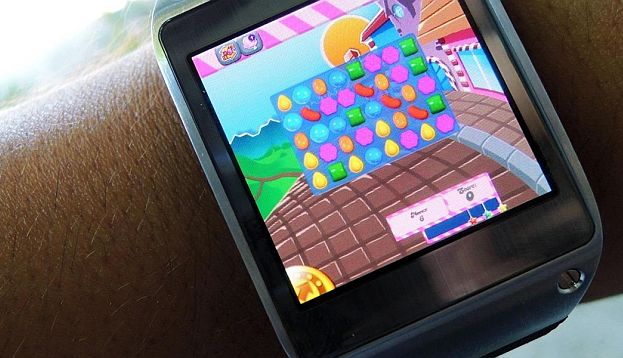All of the rumors are pointing to smartwatches as the next big category of personal electronics. Samsung introduced the Galaxy Gear recently with a muted response, probably because the device only worked with a Samsung Note 3. More devices are being added to the compatibility list, but it’s a far cry from ‘any Android smartphone or tablet’ which is what consumers would like to hear. Apple, of course, has had rumors swirling about a smartwatch for over a year.
Apple has hired executives with fashion experience, trademarked ‘iWatch’, and recently made a major investment in sapphire manufacturing (perfect for covering the screen of a device on your wrist that’s likely to see a lot of impacts). The company is widely expected to introduce a smartwatch at some point, perhaps in 2014.
What’s the point of a smartwatch? At a minimum, to keep you from having to haul out your smartphone every time you get a text or a call. Beyond alerts and notifications, smartwatches can potentially help with activity monitoring, phone calls, calendars, directions, and probably other uses we can’t even imagine.
How big is the market potential for the smartwatch? That’s hard to say at this point, because so much depends on the utility, the desirability, and the pricing. Early efforts from Samsung and Sony haven’t seen much uptake. Apple could change that equation, and possibly introduce a smartwatch that sells in the hundreds of millions of units. A sleek design with some killer features and a reasonable price could put a smartwatch on the wrist of a high percentage of smartphone owners in a few years.
Games will be a major category for smartwatches if history is any guide. This is going to be challenging for many reasons. While smartwatches will probably have plenty of graphics horsepower to play simple games, the screen size will certainly be small. Games that are played on a smartwatch screen will have to have simple visual elements, and probably not too many of them. The interface will need to be simple and clean. And, of course, play will be controlled by only one hand, not two.
There are some interesting possibilities, though, in the connection between smartwatches and smartphones, and the array of sensors likely to be built into a smartwatch. Location based games like Ingress should be possible and interesting with a smartwatch, or the combination of a smartwatch and a smartphone.
Monetization may be trickier with a smaller screen and less immersion. Giving up screen space to ads would be annoying. Buying virtual goods might be less likely if they are hard to see. Buying extra time should still be popular, but the game will have to be engaging — and that may be more difficult on a smaller screen.
Still, as the photo shows, it should be quite possible to play something like Candy Crush Saga on a smartwatch, and that right there will certainly get a lot of players. Casual games will likely be the mainstays on smartwatches, at least initially. Someday, though, your smartwatch be a third-screen experience you use for command and control on a smartphone or console game,
Game developers should be readying smartphone games for one simple reason: Marketing. The first smartphone from Apple (or anyone else) that attracts a big audience will be a great way to get massive attention on your game that’s running on it. There won’t be a lot of software, and if you can do something interesting or visually enticing you may be part of Apple’s on-stage demo. You’ll certainly get a lot of media attention.
Being up on stage with Apple at their smartwatch launch doesn’t happen by accident. A game developer with that idea in mind should be working on a design now, and perhaps getting something running on the Galaxy Gear with an eye towards porting it to iOS. A good relationship with Apple is going to be a critical factor. Designers, start your creativity!

